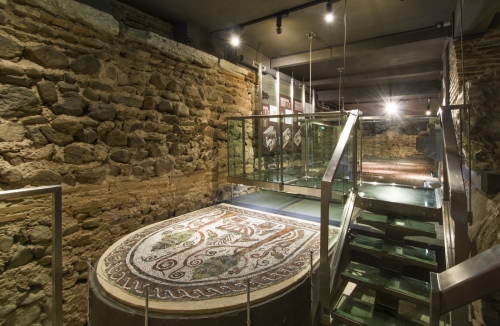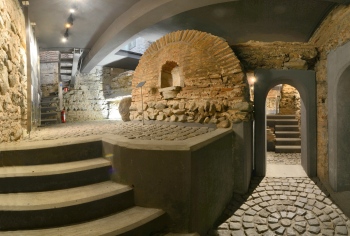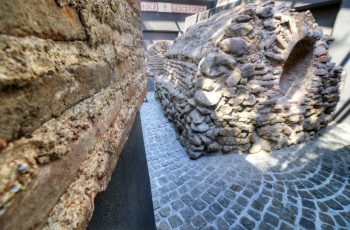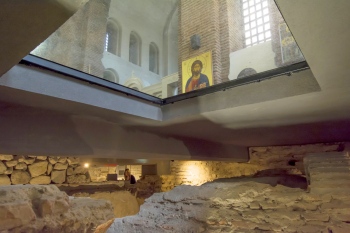Tomb of Honorius
Location / GPS: 42.69716042278132, 23.331514084238247
Objects nearby: St. Sophia Church
Public object / Private object: Public site, 10:00 - 18:00
 Tomb of Honorius
Tomb of Honorius"The Tomb of Honorius" is part of the underground archeological museum under the basilica "St. Sofia". After archeological excavations in 1989, the only tomb in late antiquity in Bulgaria with the name of the burial - Honorius - was discovered.
The tomb of Honorius is brick, with a semi-cylindrical vault, the interior is completely plastered and decorated in the technique of "alfresco" with Latin crosses in red and floral images of ivy, palm and willow in red and green tones, as well as green inflorescences from the shoulders of the crosses. The composition reveals the understandings of early Christianity about transience and metaphorically symbolizes the Garden of Eden. On the walls there is an inscription in mixed Latin and Greek letters in red, which probably reads: "Honorius, servant of Christ (God), glory to the Father and the Son and the Holy Spirit." The presence of the inscription and the indication of the name of the burials give grounds to assume that Honorius was probably a person of high rank in the Christian community of Serdica.
The tomb dates back to the second half of the 5th to the beginning of the 6th century, when the plant ornaments used to decorate the tombs were climbing plants in the form of stylized vines, willows, ivy, and the frescoes are mostly on the walls of the tomb. The dating was confirmed later in the latest studies of this part of the Eastern necropolis of Serdica, conducted in 2011. by Union Meshekov, when a coin of the imp. Justin I (518–527).
Sources:
Source 1
Source 2
Sources:
Source 1
Source 2



